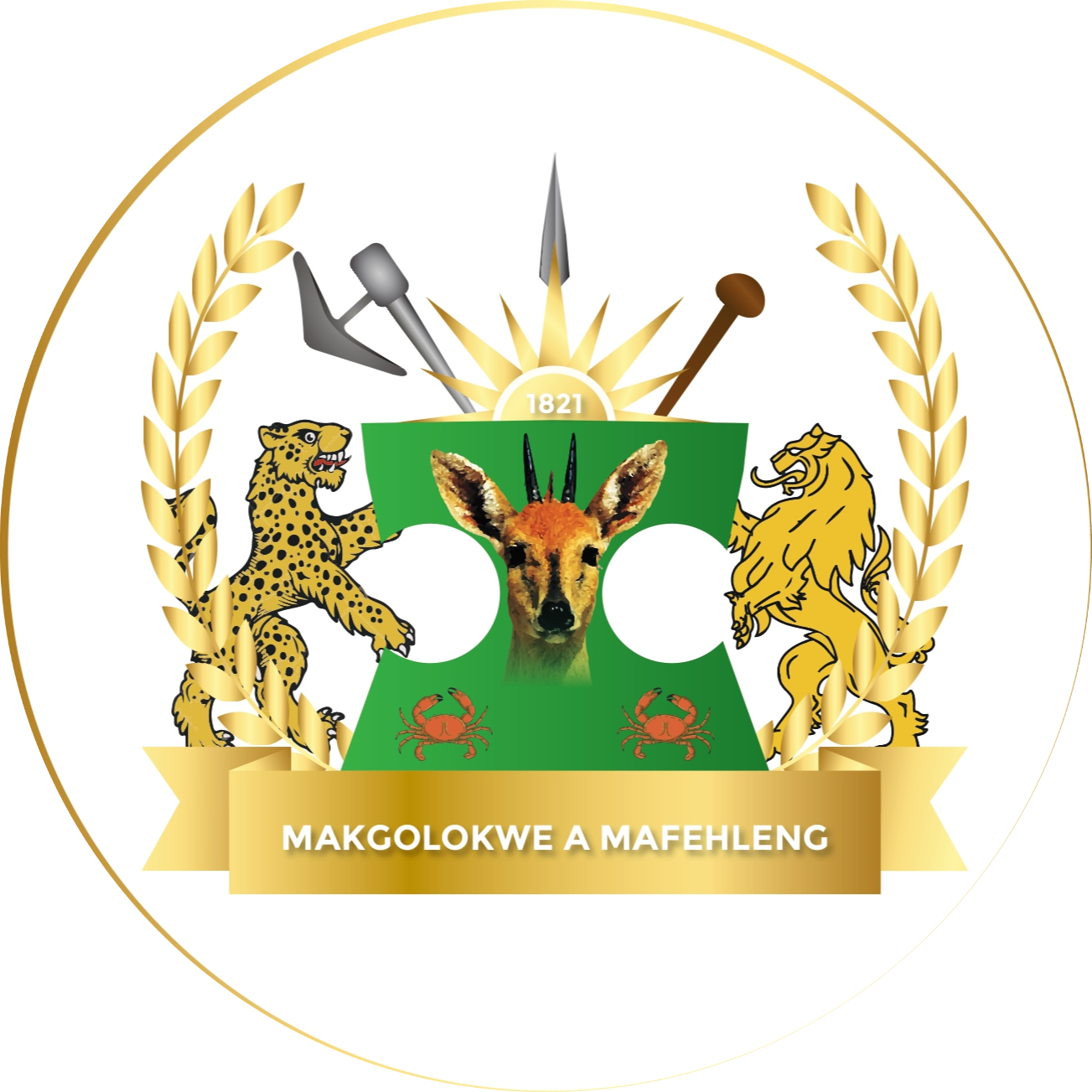History
 Makgolokwe-a-Mafehleng are a nineteenth-century, forced peripatetic, horticulturist, pastoralist chiefdom with a political economy premised upon farming and active in Northern Orange Free State and Transvaal (Southern Gauteng, North West of Free State and North East of Free State. They were a Makgolokwe group that moved West of Seratwe in 1821 at the defeat of Polane and Selotolotsa during the Makgolokwe battle with the Nhlapos.
Makgolokwe-a-Mafehleng are a nineteenth-century, forced peripatetic, horticulturist, pastoralist chiefdom with a political economy premised upon farming and active in Northern Orange Free State and Transvaal (Southern Gauteng, North West of Free State and North East of Free State. They were a Makgolokwe group that moved West of Seratwe in 1821 at the defeat of Polane and Selotolotsa during the Makgolokwe battle with the Nhlapos.
The Makgolokwe-a-Mafehleng emerged and thrived in the borderlands between Northern Orange Free State, Transvaal, and the Orange Free State where they lived peacefully as farmers until they were dispossessed the land by the government of the day from around 1880.
In 1821 Makholokoe at Thaba Kholokoe under Paramount Chief Polane son of Lehasa son of Matsemela were attacked by a Nhlapo Chief by the name of Mofeli/Molapo son of Mafohla, Mofeli was an uncle to Molupi son of Poka from Makholokoe house of Mokete, the battle was fierce seeing a large number of Makholokoe killed together with their Paramount Chief Polane, his heir Selotolotsa and Two (2) of Polane’s daughters, all from Polane’s great house. Makholokoe were dealt a serious blow and those that survived were scattered all over the place, with the royal guard taking Selotolotsa’s wife (Matubatsi/Mmasebobane) a Lekolokoe woman from the house of Tshele and her baby (Sebobane) to the Bafokeng ba Mahooana under Chief Mase and Baphuthing under the leadership of Chief Keketsi/Ratsebe in Lesosong near Tebang today Heidelberg because of Ratsebe’s military power, they lived on the mountain called Thabana Nthorwane (today Greylingstad) near today Suikerbosrand. This is where Makgolokwe-a-Mafehleng were birthed and lived for many years with Sebobane being mentored by Chief Keketsi/Ratsebe.
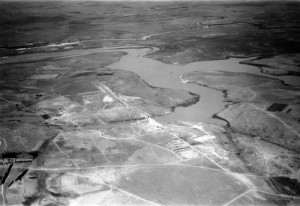
In 1836 after Sebobane’s coronation onto the throne his people were called Makgolokwe-a-Mafehleng (With reference to the area they went to live in where the rivers Vaal, Wilge, Klip, Molspruit and Grootspruit formed a basin), with the other two groups that escaped the war with Selotolotsa’s younger brother Tshuisi later led by Paramount Chief Letlatsa the son of Tshuisi, they were called later called Makholokoe a Letsitsa and the Mokete house Makholokoe a Letseba led by Molupi son of Poka settling in Dilomong today Bethlehem. In around the 1850s Makholokoe existed in various parts of the country under different chiefs (Quinlan, 1988:84), those in Free State, Natal, Eastern Transvaal and Makgolokwe-a-Mafehleng in Southern Transvaal/Northern Free State.
Sebobane married Princess Nkadimeng daughter of Bafokeng Chief Mase, he was then given a previously Bafokeng occupied land to live near Bafokeng in Mafehleng, Kokotsi today Deneysville for many years and established his Kingdom there, Sebobane fathered 3 sons named Kgabele, Morake and Matholela, when he was around 20 years Kgabele went after the Nhlapo people that had killed his great grandfather Polane and grandfather Selotolotsa in 1821, finally around 1857 when Kgabele attacked these Nhlapo people in Rapula, today Kestel. The Nhlapo’s were now under the leadership of Mahlakala son of Mofeli/Molapo. Makgolokwe-a-Mafehleng were victorious, leaving Mahlakala wounded and taking his cattle which were on route to Moshoeshoe as a gift.
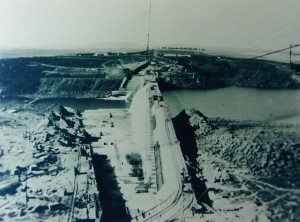
Like many other tribes during the times of turmoil brought by colonialism, Makgolokwe-a-Mafehleng fought the battle of recognition. To be recognised as a tribe with its own identity, language, history, and lineage but the government of the day was resolute in its wrongful classification of Makholokoe as Basotho. This Mephistophelian decision of the government saw Makholokoe suffering for years in the hands of farmers they were put under, it saw Makholokoe chieftaincies disregarded and the chiefs treated as common farmers and at times as general labourers. Due to the persecution of Makgolokwe-a-Mafehleng and forced removals from ancestral land Makgolokwe-a-Mafehleng lived in the shadows for many years moving from one place to the other. kgosikgolo Sebobane was very old during this time and his eldest son Kgabele was in charge of the nations affairs.
Succession – Kingship
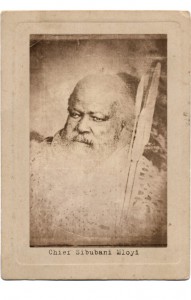
Born in 1818 Sebobane was the only child of Selotolotsa, heir of Polane of Lehasa, Selotolotsa was killed with his father Polane during the war with Nhlapos. The founding father of Makgolokwe-a-Mafehleng, Kgosikgolo Sebobane ruled from around 1836 until around the years of 1880s around Mafehleng. When they were removed from the area to make way for the Afrikaners, Sebobane sent his sons away with a part of the tribe each while he was allowed to remain in the area due to his old age, a bigger portion of the tribe leaving with Kgabele to Tebang as a senior son. Sebobane died in Mafehleng and was buried at his royal household, his wife Nkadimeng went on to live with Kgabele where she died on the 9th August 1945 at the age of 120 years.
Father: Selotolotsa wa Polane
Mother: MmaSebobane (Matubatsi) from Makholokoe house of Tshele
Wife: Nkadimeng “Letia” (Daughter of Chief Mase of Bafokeng)
Sons: Kgabele (senior), Morake (2nd son), Matholela (3rd son)
Born: 1818
Passed: 1902
 Born 1838 as the senior son of Sebobane who around 1857 went hunting for the Nhlapo people that had killed his grandfather Selotolotsa and Great grandfather Polane at the battle of Thaba Kholokoe. He traced and attacked them at Rapula today Kestel. After this attack, he and his army went to hide amongst Ba-Ntwane in the Pretoria District, Marapyane/Marapatsane. This is the district that they have lived in before as Bakgatla before they broke away as Makholokoe, Kgosi Tabane had settled in this area called Marapyane, alongside Thaba tsa Mogale. The area is a Bakgatla area with various Bakgatla chieftaincies living amongst each other; these include the Maubane that shares the name with the Makholokoe senior house of Mokete. Further north to the area is the area called Ga-Moloi, Kgabele and his army settled in the area for around 15 years before going back to Mafehleng due the boers invasion that was taking place both in marapyane and Mafehleng. Before he left for Nhlapo war Kgabele married a Mokgolokwe woman from the neighbouring Makgolokwe ba Tshele and had a son Motsoane, whom he named Sefenya after his victory of the Nhlapo. Shortly after returning to his aged father to take care of the royal affairs, they were chased away from their land in Mafehleng with the farms given to the Afrikaners as a reward for participating in the wars against Basotho. Kgabele led the tribe from Mafehleng to Tebang leaving his ailing father who was allowed to remain at the village in Mafehleng due to ill health, Kgabele went on to live and died in Tebang (Heidelberg) where his father grew up under Morena Ratsebe, he died at around the age of 96 after ruling Makgolokwe-a-Mafehleng for a long time.
Born 1838 as the senior son of Sebobane who around 1857 went hunting for the Nhlapo people that had killed his grandfather Selotolotsa and Great grandfather Polane at the battle of Thaba Kholokoe. He traced and attacked them at Rapula today Kestel. After this attack, he and his army went to hide amongst Ba-Ntwane in the Pretoria District, Marapyane/Marapatsane. This is the district that they have lived in before as Bakgatla before they broke away as Makholokoe, Kgosi Tabane had settled in this area called Marapyane, alongside Thaba tsa Mogale. The area is a Bakgatla area with various Bakgatla chieftaincies living amongst each other; these include the Maubane that shares the name with the Makholokoe senior house of Mokete. Further north to the area is the area called Ga-Moloi, Kgabele and his army settled in the area for around 15 years before going back to Mafehleng due the boers invasion that was taking place both in marapyane and Mafehleng. Before he left for Nhlapo war Kgabele married a Mokgolokwe woman from the neighbouring Makgolokwe ba Tshele and had a son Motsoane, whom he named Sefenya after his victory of the Nhlapo. Shortly after returning to his aged father to take care of the royal affairs, they were chased away from their land in Mafehleng with the farms given to the Afrikaners as a reward for participating in the wars against Basotho. Kgabele led the tribe from Mafehleng to Tebang leaving his ailing father who was allowed to remain at the village in Mafehleng due to ill health, Kgabele went on to live and died in Tebang (Heidelberg) where his father grew up under Morena Ratsebe, he died at around the age of 96 after ruling Makgolokwe-a-Mafehleng for a long time.
Father: Sebobane wa Selotolotsa
Mother: Nkadimeng (Letia)
Wife: MmaMotsoane (Makholokoe house of Tshele)
Sons: Sefenya
Born: 1838
Passed: 22 December 1933
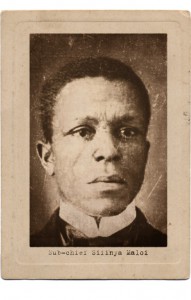
During the rule of Kgabele his son Sefenya (Motsoane) was Kgosi (Headman) to a group of Makgolokwe-a-Mafehleng who were tasked with finding suitable settlement for the tribe, it was during a challenging time when the tribe found itself being chased from one farm to another. During his father’s rule Sefenya led the group tasked with finding a peaceful settlement for the tribe through the difficult time up to the North, then to Groot Marico and he was killed in battle in the Mafikeng district, his son was taken back to Tebang to his grandfather. Sefenya married a Mohlakoana woman and had a son Matebele. During the Anglo-Boer war many of the families found themselves in the concentration camps and after the war Makgolokwe-a-Mafehleng found themselves completely with no land. Sefenya found land in the Mafikeng District where he lived with his people and neighbouring Barolong, he fought alongside the Barolong against the Boers during the Mafikeng Siege and after the siege was shot and killed by a Boer farmer in a land dispute leaving his son Matebele/Motebele in charge but with no land and many of the followers working as farm workers. These events saw his father as the last ruling Kgosikgolo of Makgolokwe-a-Mafehleng before many settled around what was called native townships after the death of his father.
Father: Kgabele was Sebobane
Mother: MmaMotsoane
Wife: MmaMatebele (Daughter of Bahlakoana)
Children: Matebele (senior son), 4 daughters
Born: 1856
Passed: 16th April 1900
 Matebele “Stephen” was born at the time Makgolokwe-a-Mafehleng were chased away from Mafehleng, he was believed to have been given the name to mark the attacks of Mzilikazi in Mafehleng when Sebobane first arrived there, the attack that saw the nearby living Batlokwa wiped out, it was a year after Makgolokwe-a-Mafehleng settled in the area in 1836. This name was given to him to preserve the history of the land that was taken from them, the land where Matebele triumphed over Batlokwa. He succeeded his father Sefenya but never ruled due to the restrictions of the government and became a religious preacher, he married a Lekhoakhoa woman by the name of Mampe and gave birth to a son called Naka la None. Matebele and his family lived from one farm to the other and ended up in the Standerton area where he passed.
Matebele “Stephen” was born at the time Makgolokwe-a-Mafehleng were chased away from Mafehleng, he was believed to have been given the name to mark the attacks of Mzilikazi in Mafehleng when Sebobane first arrived there, the attack that saw the nearby living Batlokwa wiped out, it was a year after Makgolokwe-a-Mafehleng settled in the area in 1836. This name was given to him to preserve the history of the land that was taken from them, the land where Matebele triumphed over Batlokwa. He succeeded his father Sefenya but never ruled due to the restrictions of the government and became a religious preacher, he married a Lekhoakhoa woman by the name of Mampe and gave birth to a son called Naka la None. Matebele and his family lived from one farm to the other and ended up in the Standerton area where he passed.
Father: Motsoane (Sefenya) wa Kgabele
Mother: MmaMatebele
Wife: MmaKgeya (Mampe daughter of Makhokhoa)
Children: Kgeya (Naka La None), Stanka
Born: 1881
Passed: 27 February 1938

Naka la None was also known as Kgeya and he succeded his father Matebele, though he was with no land and all his followers scattered as farm workers, he married a Mokubung woman by the name of Manini and had 3 sons and 3 daughters. He lived a nomad life like his forefathers searching for land, he lived for some years in Mafehleng, Groot Marico and settled in Evaton where he passed on and was buried. His first son Tshele passed on at an early age without a child when they still lived on a farm (Bespiet) in Mafehleng. He found himself in trouble with the law often fighting with the farmers in the area over the laws that suppressed his people and eventually was chased away from the area.
Father: Matebele wa Sefenya (Motsoane)
Mother: MmaKgeya
Wife: MmaTshele (Manini daughter of Bakubung)
Children: Tshele (senior son passed without children), Sesi, Mpai, Letsielo, Naku (Mamotsoane), Rantalane.
Born: 1910
Passed: 2004
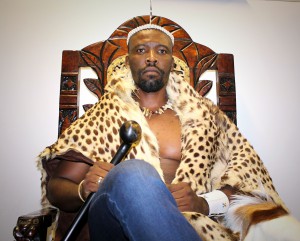
With Tshele passing without a child the Kingship went to the house of his younger brother Letsielo as per tradition, Letsielo was never coronated, and no successor was coronated until his son Matholela. He assumed the name of Lehasa II as a Kgosikgolo of Makgolokwe-a-Mafehleng. Kgosikgolo Lehasa II is the current monarchy of Makgolokwe-a-Mafehleng with various Chiefs serving under his leadership in the various regions of Mafehleng. He has brought great transformation in the region of Mafehleng and led the restoration of culture, he leads initiatives that will see the Kingdom not only restored by becoming one of the most formidable self-sustaining communities.
Father: Letsilo wa Naka la None (Kgeya)
Mother: Mmamatholela (Seipati daughter of amaHlubi)
Wife: Mmatubatsi
Children: Kgopotso (Late), Refiloe, Lebohang (Late), Tau, Lesego, Lethabo, Letlotlo
